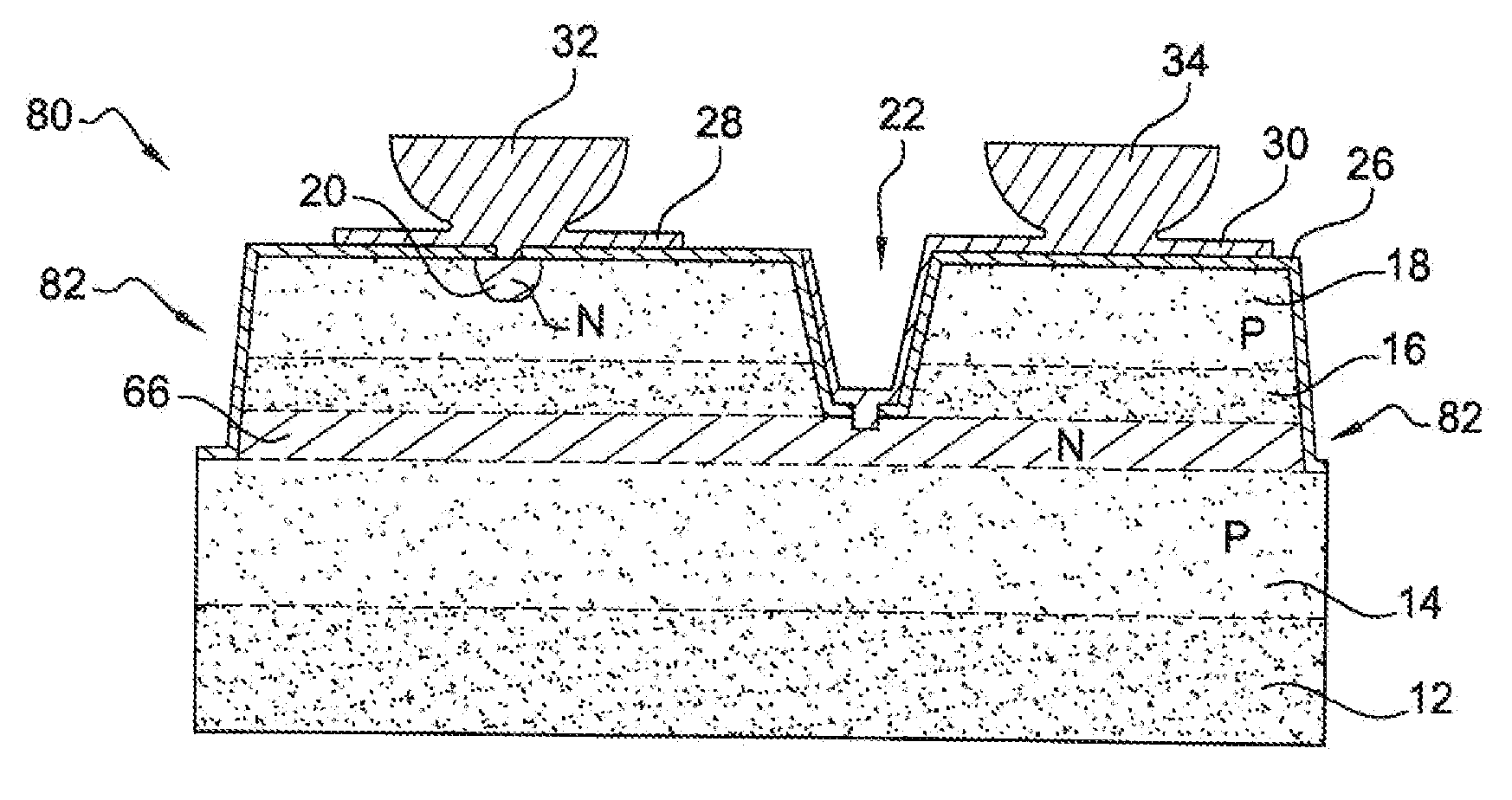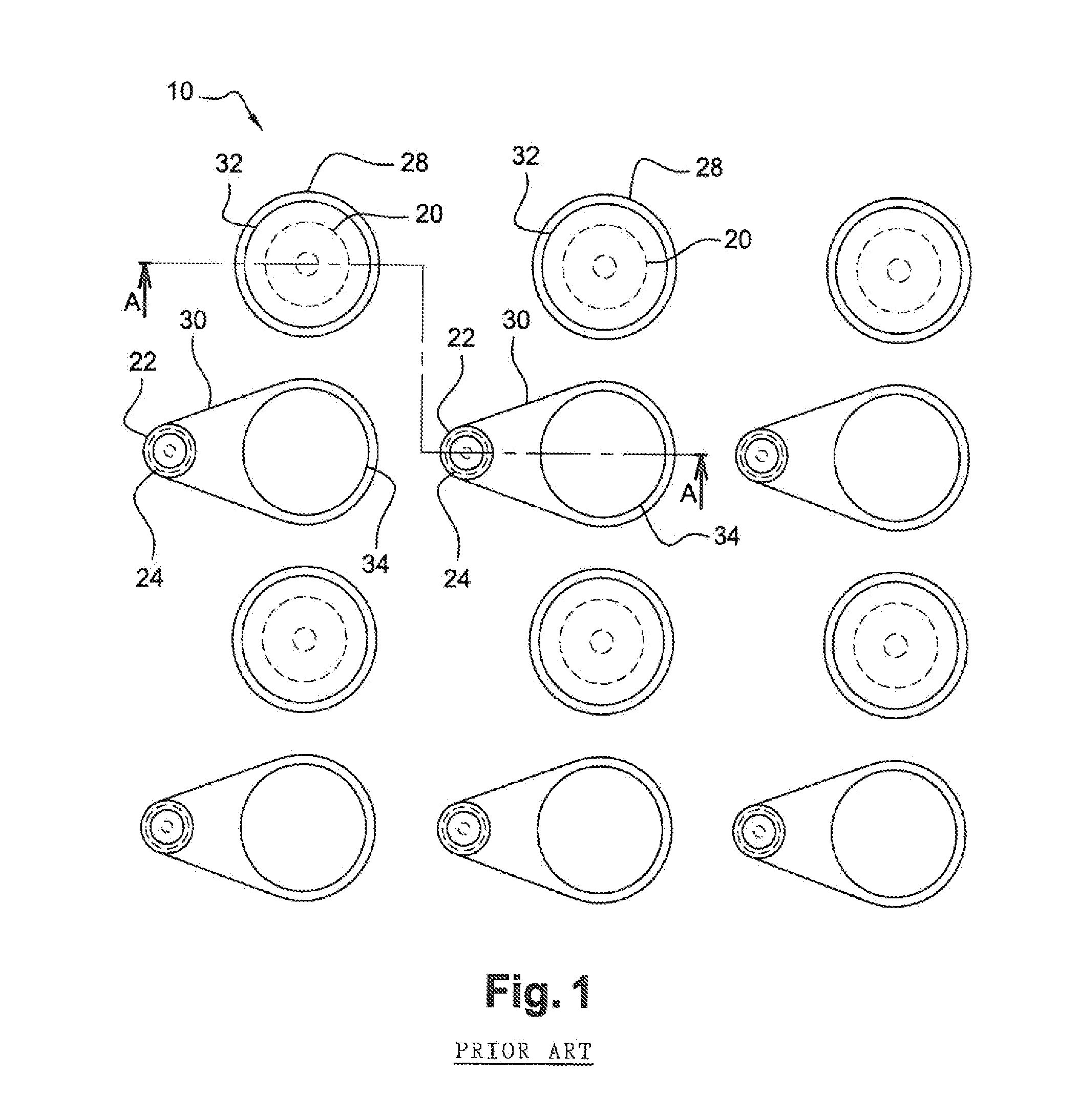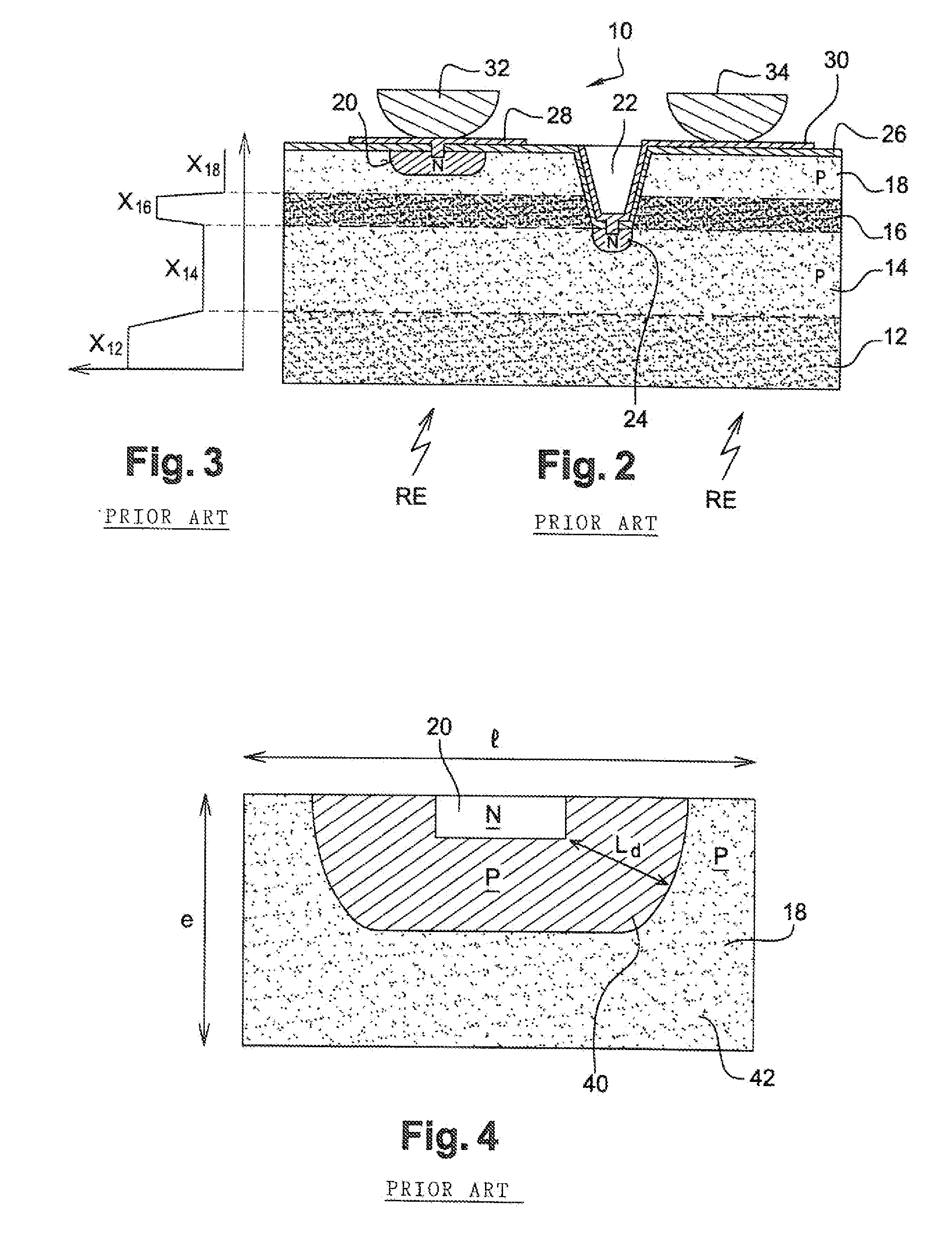Multilayer bispectral photodiode detector
a photodiode detector and bispectral technology, applied in the field of bispectral detection, can solve the problems of affecting the quality of photodiodes, and affecting the quality of photodiodes, and achieves the effects of good temporal and spatial coherence, high packing density, and simple manufacturing
- Summary
- Abstract
- Description
- Claims
- Application Information
AI Technical Summary
Benefits of technology
Problems solved by technology
Method used
Image
Examples
first embodiment
[0108]A detector 60 according to a first embodiment of the invention is described below making reference to FIGS. 8 and 9. FIG. 8 is a top view showing an array of two pixels by two pixels and FIG. 9 is a cross-sectional view along line C-C in FIG. 8.
[0109]Detector 60 differs from detector 10 in FIGS. 1 to 3 by virtue of the shape of the N-type semiconductor zones implanted in layers 14 and 18 of the stack and the presence of cuts 62 around each pixel 64.
More especially, N-type zones 20 and 24 according to the prior art are, respectively, replaced by N-type layers 66 and 68 which entirely cover P-type absorption layers 14 and 18.
[0110]Advantageously, N-type layer 66 and P-type layer 14, as well as N-type layer 68 and P-type layer 18, are produced during a single epitaxial growth step by introducing appropriate dopants into the CdxHg1-xTe alloy in order to obtain the desired cadmium composition and N- or P-type properties.
[0111]The pixels are then individualized by etching cuts 62 in...
second embodiment
[0119]In the embodiment described above, the form factor of cuts 62, although considerably reduced compared with the prior art used in “head-to-foot” type detectors, may still be considered to be too high.
[0120]A second embodiment, illustrated by the cross-sectional view in FIG. 10, differs from the first embodiment in that the N-type semiconductor zones 24 produced in contact with absorption layer 14 in order to form the lower PN junctions are produced at the bottom of openings 22 by using a “planar” type method, in a similar way to zones 24 according to the prior art, by extrinsic doping with N-dopants, for example by ion implantation or by ion implantation and converting the P-type intrinsic doping to N-type doping or by diffusion.
[0121]Zones 24 have a diameter of 2 to 10 micrometers for example.
[0122]The upper photodiodes are then individualized by etching cuts 72 in the upper face of the assembly as far as upper absorption layer 18. The depth of cuts 72 is therefore shallow and...
third embodiment
[0128]In the third embodiment, illustrated by the cross-sectional view in FIG. 11, the structure of detector 80 is inverted compared with detector 70 in the second embodiment.
[0129]More especially, the upper photodiodes are of the “planar” type with N-type semiconductor zones 20 implanted in absorption layer 18 in a similar manner to those according to the prior art. The lower photodiodes are of the “mesa” type and are formed by N-type layer 66 which covers P-type absorption layer 14, with cuts 82 being made in the upper face of the assembly as far as layer 14 in order to individualize the pixels.
[0130]Here, the packing density of lower photodiodes 66, 14 is optimal by design, bearing in mind the desired thickness for absorption layer 14, and the packing density of upper photodiodes 20, 18 is advantageously maximized by increasing the diffusion length Ld in layer 18 by applying an appropriate heat treatment such as that described, for instance, in the document entitled “Electrical d...
PUM
 Login to View More
Login to View More Abstract
Description
Claims
Application Information
 Login to View More
Login to View More - R&D
- Intellectual Property
- Life Sciences
- Materials
- Tech Scout
- Unparalleled Data Quality
- Higher Quality Content
- 60% Fewer Hallucinations
Browse by: Latest US Patents, China's latest patents, Technical Efficacy Thesaurus, Application Domain, Technology Topic, Popular Technical Reports.
© 2025 PatSnap. All rights reserved.Legal|Privacy policy|Modern Slavery Act Transparency Statement|Sitemap|About US| Contact US: help@patsnap.com



